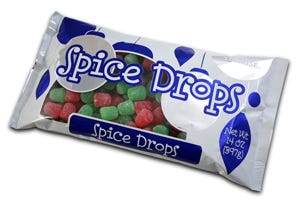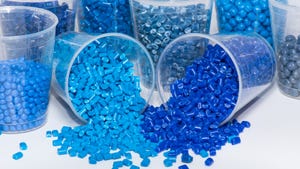Combining the classy look of metalized flexible film with the desire of end users to actually see a product, cast-film extruder and converter Multifilm Packaging (Elgin, IL) has developed its D-Met (de-metalizing) technology that facilitates metalizing part of a film while leaving other areas clear for product presentation. The D-Met process gets its official introduction at Pack Expo 2009 in Las Vegas in October. D-Met partly removes metal from a metalized film, leaving a clear window in an otherwise metalized design.
September 17, 2009
Combining the classy look of metalized flexible film with the desire of end users to actually see a product, cast-film extruder and converter Multifilm Packaging (Elgin, IL) has developed its D-Met (de-metalizing) technology that facilitates metalizing part of a film while leaving other areas clear for product presentation. The D-Met process gets its official introduction at Pack Expo 2009 in Las Vegas in October. D-Met partly removes metal from a metalized film, leaving a clear window in an otherwise metalized design.
|
Though an offline process, “We run up to 500 feet per minute, wide web, so the process is definitely suitable for high-volume applications,” explained Marcus Magnusson, the company’s new business development manager, in answer to questions from MPW. One of the converter’s first projects was for the September 2009 issue of Maxim magazine. “We feel that running D-Met offline is an advantage as we can run both single-web overwraps (like Maxim) and 2-ply or 3-ply laminations,” continued Magnusson.
The process of metalizing plastic films is old hat, and processes similar to D-Met for controlled removal of some of that metal are used in Asia, but according to Multifilm it is the only integrated (film extrusion plus conversion) converter offering the service in North America. Another option to release the same effect on a package is to print it with metalized inks, but this can prove too costly. Plus, opines Magnusson, D-Met offers flexibility (single-web overwraps or 2- or 3-ply laminates) that may be beyond the reach of online printing applications. Multifilm says the appearance of D-Met metalized products also is higher than that of metallic ink-printed ones. According to an article in Folio magazine, which covers the media industry and reported on D-Met’s use for the Maxim issue, the de-metalized polybags for that magazine cost about 30% more than the standard, transparent polypropylene ones.
Len Brooker, product manager for D-Met, said, “The product is displayed like a clear window bag, and the colors have the brilliance of a metalized bag…In today’s economy, differentiation is more important than ever, and D-Met will give you that advantage and make the product ‘pop’ on the shelf.” —Matt Defosse
About the Author(s)
You May Also Like



